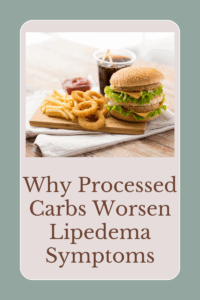Navigating the maze of health testing can be a bit like getting through a dense fog – you know there’s something out there, but the pathway isn’t always clear. When it comes to your well-being, understanding how to test for insulin resistance could be the beacon you’ve been searching for. Not just for diabetics or the ‘health aware,’ this topic carries particular weight for the many.
Insulin Resistance Unraveled
Imagine insulin as the key to the body’s fuel tank, driving energy into the cells. Insulin is a crucial hormone that regulates blood sugar (glucose) levels. If cells in your muscles, body fat, and liver start resisting or ignoring the signal that the key – insulin – is trying to deliver, the resulting pile-up of glucose in your bloodstream can lead down quite a complex health road.
Insulin resistance could be viewed as the initial barrier driver to conditions like prediabetes, and, eventually, type 2 diabetes. It’s a red flag signaling the necessity to not just monitor, but, more importantly, manage your health.
Understanding the Resistance Beast
Insulin resistance is not a disease in itself but serves as a harbinger for potential health complications. With the rollercoaster of modern diets and sedentary lifestyles, many are riding towards this health eventuality.
Insulin resistance promotes the risk of not just the aforementioned diabetes, but other serious health concerns as well:
- Cardiovascular disease
- High blood pressure
- Cholesterol abnormalities
- Infertility
- Polycystic ovary syndrome (PCOS)
- Nervous system disorders
- Certain cancers
The Red Flags of Resistance
The body often gives off signals before things go too awry. Knowing these signs can prompt early intervention, possibly diverting the path towards chronic illness.
Common Symptoms Include:
- Increased hunger
- High levels of triglycerides in the blood
- High blood pressure
- A waistline that measures larger than 35 inches for women or 40 inches for men
- Polycystic ovary syndrome (PCOS)
Testing the Defenses
Detecting insulin resistance is like having night-vision for your health – it lets you see the troubles long before they can be picked up on a regular health examination. There is no one test, reviewing the test listed here can help you uncover if you are insulin resistant.
Fasting Blood Glucose Test
This simple, non-invasive, and common test measures your blood sugar level. It’s usually done after an overnight fast. If your blood sugar level is higher than normal, but not high enough to be classified as diabetes, it’s considered prediabetes. A red flag in this test signals warrants a closer look at your insulin sensitivity.
Oral Glucose Tolerance Test
A test to observe your body’s reaction to a fluid containing glucose is also performed after an overnight fast. Blood samples are taken every 30 to 60 minutes after you drink the sugary solution. Similar to the fasting glucose test, elevated levels may point to prediabetes and, potentially, insulin resistance.
Hemoglobin A1c Test
This test provides information about your average levels of blood glucose over the past three months. It’s an indicator of prediabetes and diabetes and can be a powerful tool in examining your insulin sensitivity.
Insulin Level Test
Measuring the specific level of insulin in your blood provides a more direct method for identifying insulin resistance. This test can be done alongside the fasting glucose test to give a more comprehensive view of your metabolic state.
HOMA-IR Test
Homeostatic Model Assessment of Insulin Resistance (HOMA-IR) uses fasting glucose and fasting insulin tests to estimate insulin sensitivity and beta-cell function. It can provide valuable insight into how well your body is responding to insulin.
Deciphering the Tally
Understanding the results of these tests involves a bit more than simple arithmetic. Comparing your test results against standard ranges offers clues into your body’s metabolic standing.
What Results Might Suggest Insulin Resistance?
- A fasting glucose level of 100-125 mg/dL
- A two-hour glucose level of 140-199 mg/dL in the oral glucose tolerance test
- HbA1c of 5.7% to 6.4%
- Fasting insulin levels higher than 16-25 mIU/L
- A HOMA-IR score above 2.5
Consistently elevated test results are ready indicators that your path may be leading towards insulin resistance.
The Power of Proactivity
Finding out you have insulin resistance isn’t a death sentence – far from it. In fact, it’s an opportunity to start making changes that can steer your health in a more positive direction. Lifestyle interventions, such as dietary adjustments, regular exercise, and weight management, have been shown to improve insulin sensitivity and prevent or delay the progression to type 2 diabetes.
In Conclusion
-> Regular testing for insulin resistance should be as much of a health regimen as daily brushing – it’s that important to the foundation of your long-term wellness.
-> Early detection translates not just to more time, but quality time, with a buffer for staving off the complications that may arise.
-> The tests may initially seem complex, but the insights they provide are a pathway to health liberation – a foretelling of what changes you need to make on your personal health compass.
Taking control of your health can seem like a daunting task, especially when it involves medical jargon and tests, but the clarity and foresight that come with understanding and testing for insulin resistance are invaluable. The quest for better health is a marathon, not a sprint. And just like any good adventure, knowing how to detect insulin resistance could be the unexpected plot twist that saves the day—or rather, the day of countless tomorrows.
I’m here to help
OX Cindy
Join my Facebook group:https://www.facebook.com/groups/7021999704562921







